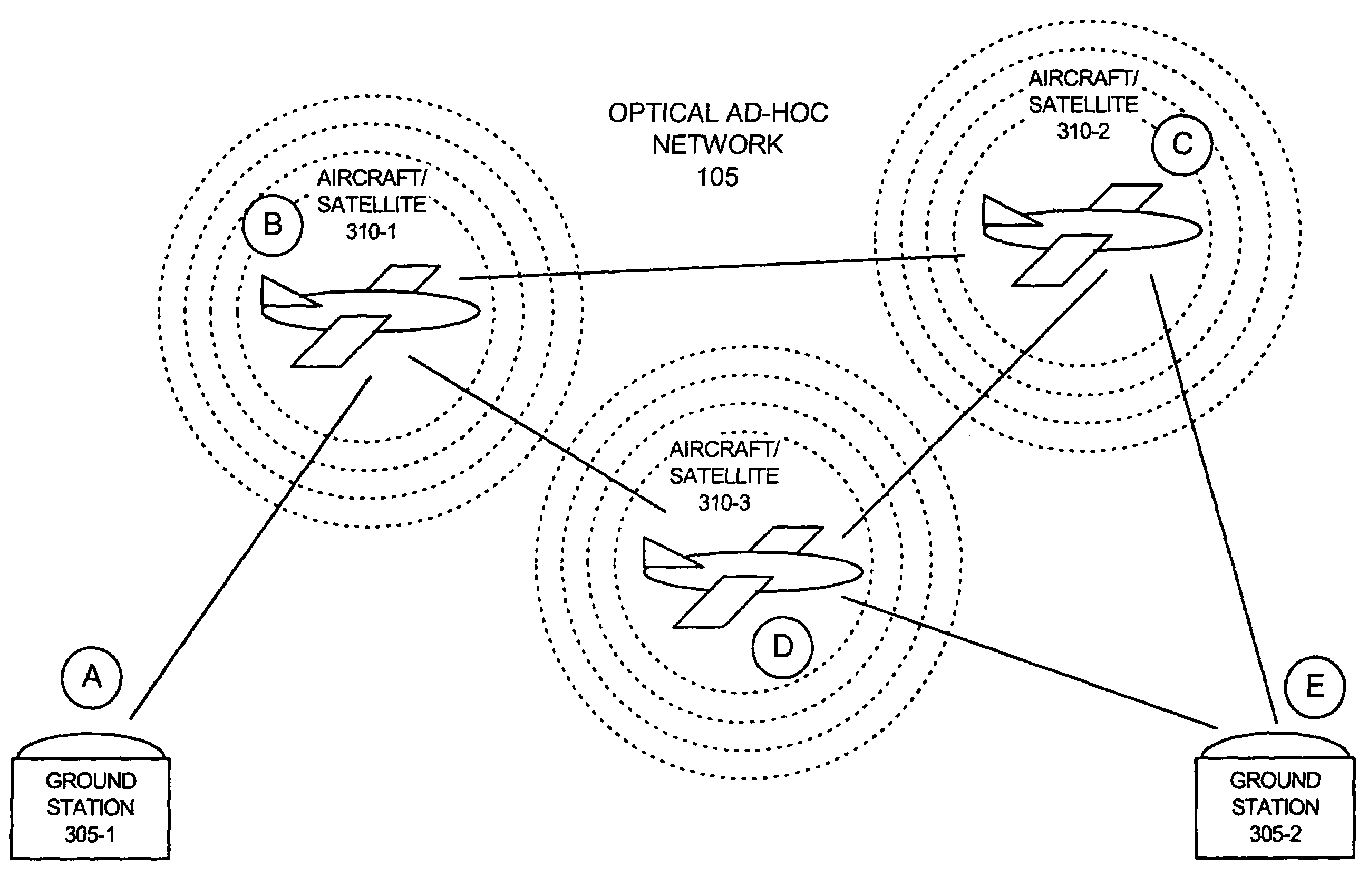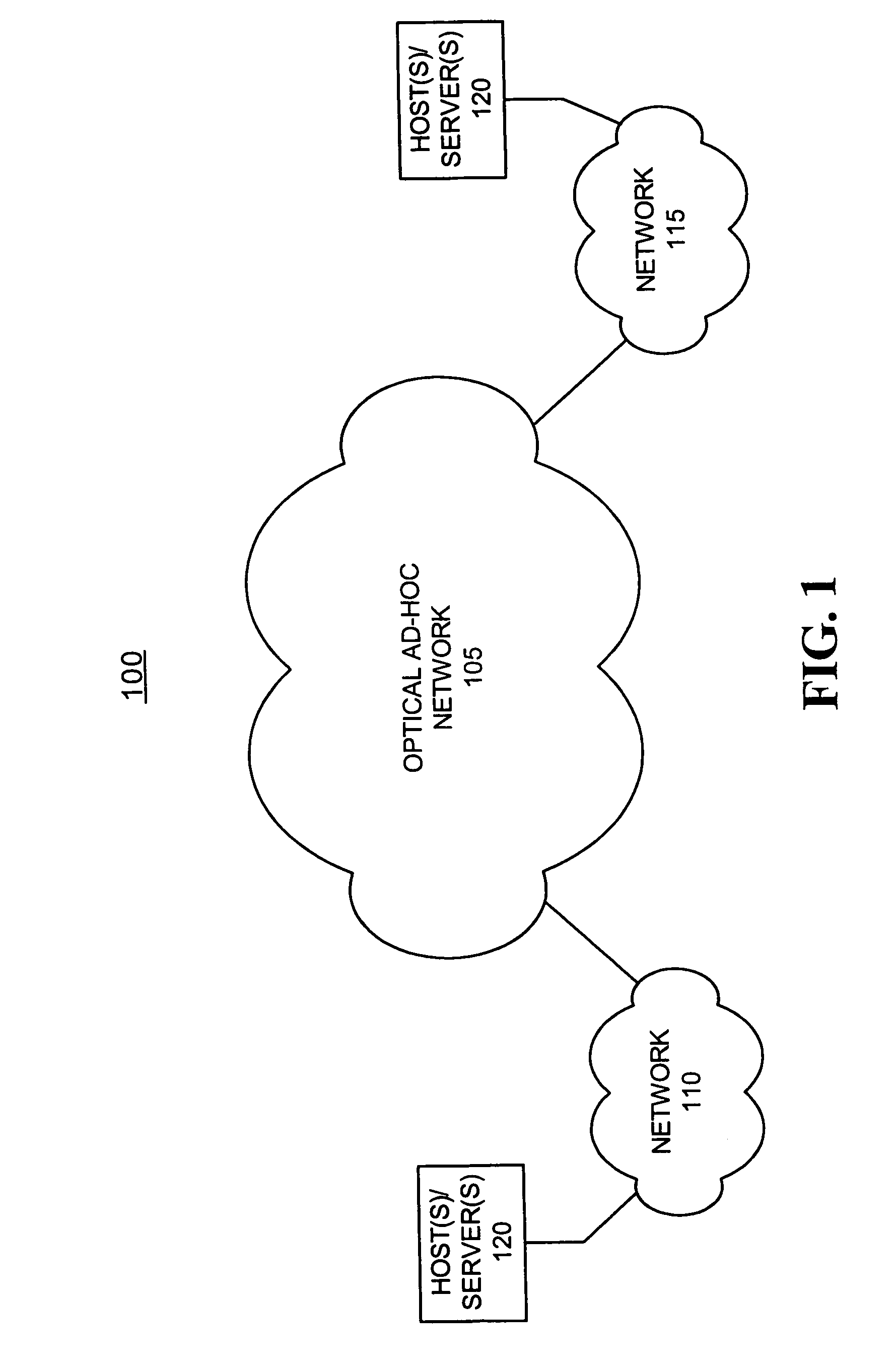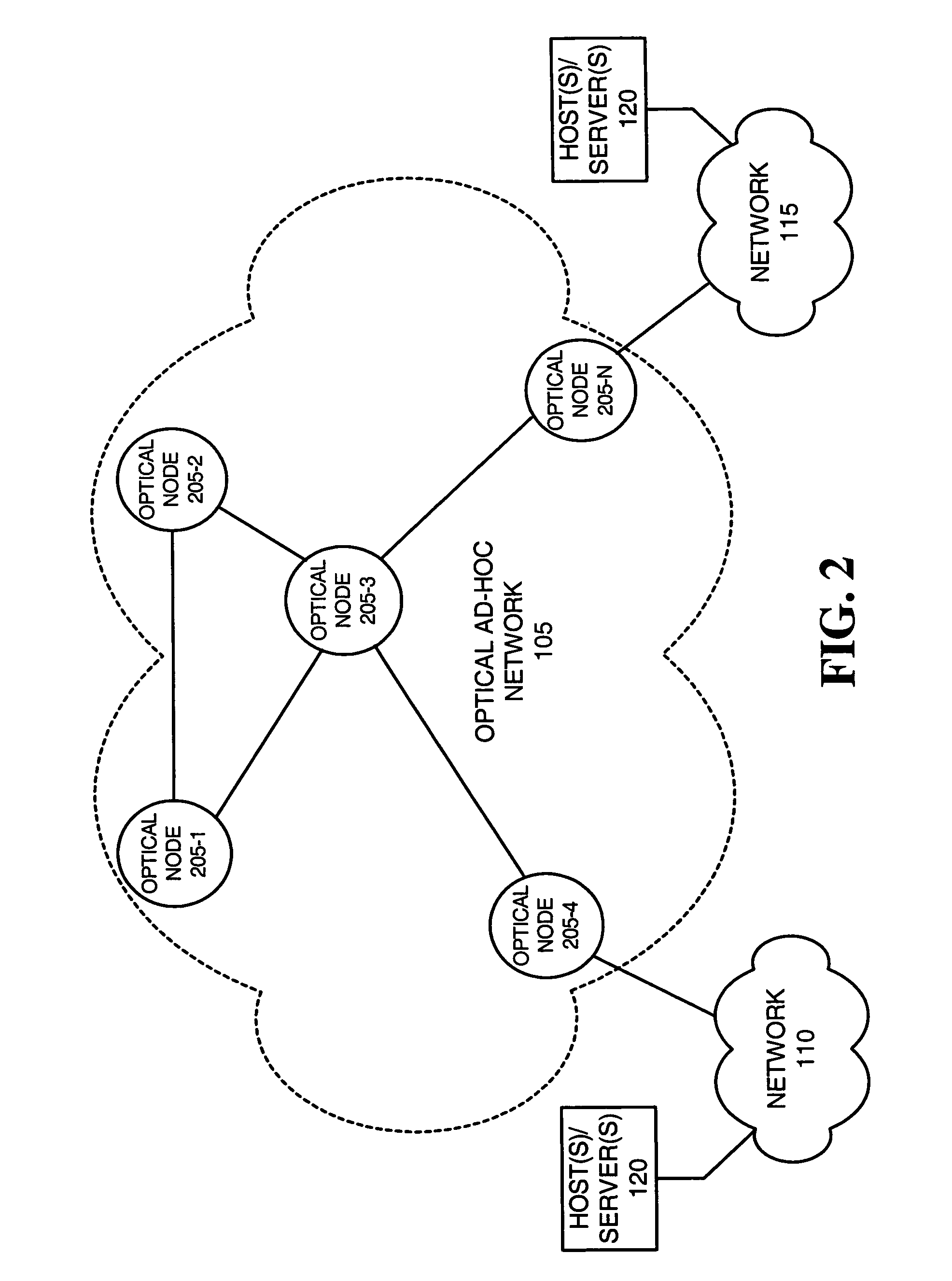Systems and methods for implementing contention-based optical channel access
a technology of optical channel access and contention, applied in the field of adhoc networks, can solve the problems of not economical or impractical use, constructing such an infrastructure is either impractical or not economical for the short-term use that is often required, and each wireless node is limited in the distance over which it can reliably transmi
- Summary
- Abstract
- Description
- Claims
- Application Information
AI Technical Summary
Benefits of technology
Problems solved by technology
Method used
Image
Examples
Embodiment Construction
[0023]The following detailed description of the invention refers to the accompanying drawings. The same reference numbers in different drawings may identify the same or similar elements. Also, the following detailed description does not limit the invention. Instead, the scope of the invention is defined by the appended claims.
[0024]Systems and methods consistent with the present invention implement a hybrid RF / optical channel access scheme that may be employed in a multi-hop, ad-hoc network. The use of optical links for transmission of significant quantities of data, as opposed to conventional RF links, permits very high throughputs, on the order of multiple gigabits per second, in an ad-hoc environment where nodes may be moving around and links may be created and terminated with a high degree of frequency.
Exemplary Network
[0025]FIG. 1 illustrates an exemplary network 100 in which systems and methods may implement contention-based optical channel access consistent with the present i...
PUM
 Login to View More
Login to View More Abstract
Description
Claims
Application Information
 Login to View More
Login to View More - R&D
- Intellectual Property
- Life Sciences
- Materials
- Tech Scout
- Unparalleled Data Quality
- Higher Quality Content
- 60% Fewer Hallucinations
Browse by: Latest US Patents, China's latest patents, Technical Efficacy Thesaurus, Application Domain, Technology Topic, Popular Technical Reports.
© 2025 PatSnap. All rights reserved.Legal|Privacy policy|Modern Slavery Act Transparency Statement|Sitemap|About US| Contact US: help@patsnap.com



